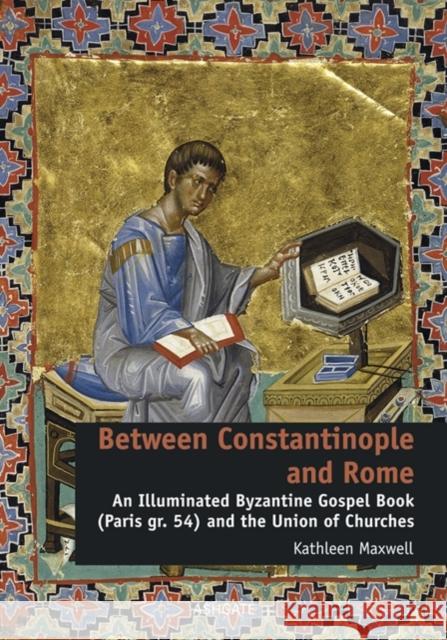Between Constantinople and Rome: An Illuminated Byzantine Gospel Book (Paris Gr. 54) and the Union of Churches » książka
Between Constantinople and Rome: An Illuminated Byzantine Gospel Book (Paris Gr. 54) and the Union of Churches
ISBN-13: 9781409457442 / Angielski / Twarda / 2014 / 390 str.
Between Constantinople and Rome: An Illuminated Byzantine Gospel Book (Paris Gr. 54) and the Union of Churches
ISBN-13: 9781409457442 / Angielski / Twarda / 2014 / 390 str.
(netto: 716,30 VAT: 5%)
Najniższa cena z 30 dni: 705,23 zł
ok. 16-18 dni roboczych.
Darmowa dostawa!
This is a study of the artistic and political context that led to the production of a truly exceptional Byzantine illustrated manuscript. Paris, Bibliotheque Nationale de France, codex grec 54 is one of the most ambitious and complex manuscripts produced during the Byzantine era. This thirteenth-century Greek and Latin Gospel book features full-page evangelist portraits, an extensive narrative cycle, and unique polychromatic texts. However, it has never been the subject of a comprehensive study and the circumstances of its commission are unknown. In this book Kathleen Maxwell addresses the following questions: what circumstances led to the creation of Paris 54? Who commissioned it and for what purpose? How was a deluxe manuscript such as this produced? Why was it left unfinished? How does it relate to other Byzantine illustrated Gospel books? Paris 54's innovations are a testament to the extraordinary circumstances of its commission. Maxwell's multi-disciplinary approach includes codicological and paleographical evidence together with New Testament textual criticism, artistic and historical analysis. She concludes that Paris 54 was never intended to copy any other manuscript. Rather, it was designed to eclipse its contemporaries and to physically embody a new relationship between Constantinople and the Latin West, as envisioned by its patron. Analysis of Paris 54's texts and miniature cycle indicates that it was created at the behest of a Byzantine emperor as a gift to a pope, in conjunction with imperial efforts to unify the Latin and Orthodox churches. As such, Paris 54 is a unique witness to early Palaeologan attempts to achieve church union with Rome.











